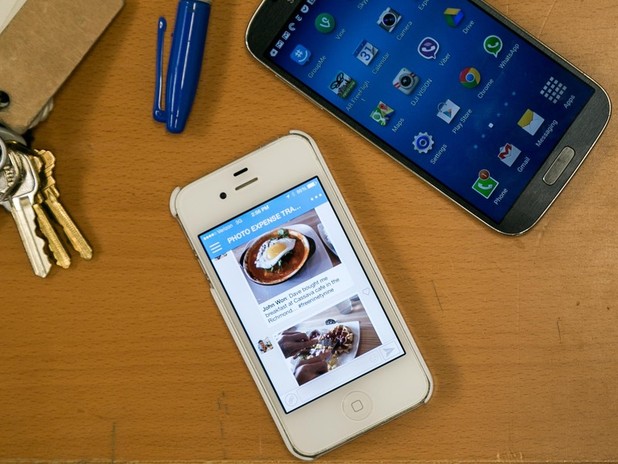February 03, 2014
While prototyping mobile app solutions for Moneythink's youth financial literacy program, John Won and his IDEO.org team tested early ideas on themselves first before moving forward with a few core concepts.
We had 6 weeks to design a mobile app to improve financial literacy of high school students. Six weeks was not a lot of time, so we decided to go into the field on Day 2 of the project. And after one week of user research in Chicago, we returned to begin synthesis and then quickly move into concepts: What had we seen and learned that might help young people become more financially savvy? What could a mobile app actually do, how might it work, and would young people even use it?
By week 2, we had lots of sketchy, early, energetic ideas. An IDEO.org-wide brainstorm helped us generate even more. But we didn’t have confidence in any one idea yet as a team, in part because we hadn’t yet arrived at insights. But we were already one-third of the way through the project. So, here’s what we did:
Rafael gave us a challenge. By the end of week 2, we had to build 3 prototypes. So, blearily at 5 pm on Friday, the team sketched three concepts. They were our 3 best guesses at the time. And we decided to test them on ourselves over the weekend.
1. Rafael’s experiment was “photo budget.” He had to take a photo of everything he bought, tag how much he spent, and share it with us on a group-messaging app called GroupMe.
2. I was challenged to “Sell Stuff” by finding unused items in my home and try to generate new income by selling it on eBay.
3. The last concept “I Didn’t” was to capture and share near-misses, moments where one experiences and successfully resists the temptation to buy something.
Saturday, we checked the app for updates from each prototype. We hit the like button next to each post, tracked each other’s progress, and gave feedback in real time. By Monday morning, we’d learned a lot, both from our own prototype but also from interacting with each other’s. As a team, we shared how we had felt, why we’d made the choices we did, and what we might try differently next time.
For example, Rafael posted a photo of a yoga class that he loves attending. But then he felt embarrassed to share that it cost him $18. This raised a great question for us: it can be tricky enough to habitualize snapping a photo every time you spend money, but then if you have to reveal each of those moments to your peers, it can raise inhibitions, especially if you may be self-conscious and they happen to be judgmental. We ran another prototype later, replacing prices with hashtags for comments, which gave the user more control to personally value a moment or purchase. Sushi could be a seemingly low $5, but #overpriced for the experience. A pair of shoes could cost a hefty $200, but #totallyworthit to complete a teenage wardrobe and fit in a particular high-school social sphere. Hashtags. Young people love them. They enabled authorship and creative expression… and engagement and conversation.
In our quick self-tests, although we as prototype users were not the same as our high-school student end users (we’re 10–20 years older and from varying backgrounds), although we chose to use GroupMe as a prototyping platform despite its lack of popularity among youth (it’s no Snapchat), and although GroupMe would probably be nothing like the financial-literacy app we'd design ourselves (obvi!)… these details didn’t matter. What did matter was that instead of thinking and talking more about our ideas we actually tested and answered key questions. And what we learned from these rough, hasty experiments was enough to drive us forward in our design process and—most importantly for Week 2—we tested them quickly.
Week 3 flew by (also, it was Thanksgiving). By Week 4, we’d run self-test prototypes again with slightly different questions. By Week 6, we’d passed this quick testing method onto Moneythink who began to run overnight tests of ideas for financial-literacy challenges—to see how they felt, what new questions and issues arose, and what they might test next—as they developed a larger curriculum of interactive challenges for youth to be administered through the mobile app.








